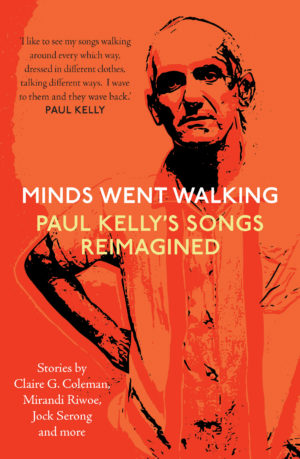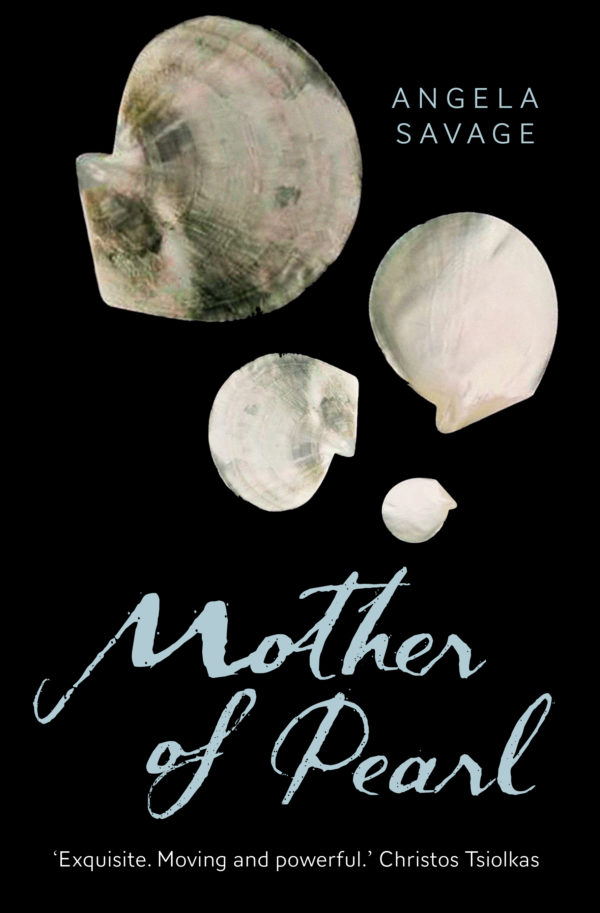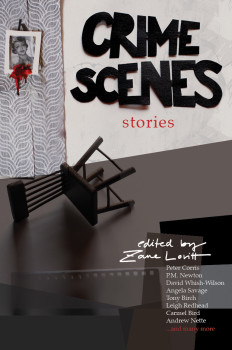 Nearly 10 years ago, I was contacted by a stamp collector, who’d found a letter to my father, Haydn, from his father, Les, among a bulk lot of first day covers bought at auction. I wrote about this extraordinary story here. They say lightning never strikes the same place twice, but don’t believe them: today I received a second letter to my father from his father, again, thanks to the kindness of a stamp collector and a unique quirk on Les’s part.
Nearly 10 years ago, I was contacted by a stamp collector, who’d found a letter to my father, Haydn, from his father, Les, among a bulk lot of first day covers bought at auction. I wrote about this extraordinary story here. They say lightning never strikes the same place twice, but don’t believe them: today I received a second letter to my father from his father, again, thanks to the kindness of a stamp collector and a unique quirk on Les’s part.
As a child, I wrote a tribute to my grandfather that began, “My grandfather collects things.” Among his collections were chord charts, National Geographic, thundereggs and first day covers — envelopes commemorating the release of new stamps. Les would occasionally purchase an official first day cover, but more often send a stamped envelope addressed to his son Haydn with ‘First Day Cover’ penned on the front in his exquisite handwriting. Most of these first day covers contained blank paper, artifacts rather than correspondence. But every now and then my grandfather would enclose a letter to my father. His quirk was to include instructions about when the letter was to be opened. In this latest case, the letter was written and the first day cover issued on 1 October 1937. My grandfather had written on the top of the envelope ‘To be opened on 1st Oct 1952’.
Why my grandfather did this, I’ll never know. It used to drive my own father, Haydn, crazy: ‘My father did this to me all my life,’ he told me back in 2012 when the first letter came to light, ‘post-dated mail by many years, then refused to let me open it on the date.’
The instructions caught the attention of the stamp collector, in this case, Marilyn Warner, who contacted me through Facebook. She told me that she had spent years looking for my father, Haydn, recently finding his death notice, which led her to me. Here’s the story in her words:
“[M]any, many years ago I purchased a lot at a stamp auction [of] letters from the 1870s in England. Amongst them I discovered a small pack of first day covers that someone had lovingly sent to their son over many years. There was also a letter…from your Grandfather to your father when he was 2 years old. There is such love that I could never sell them or throw them away. I am one of those people who treasure memories, letters, notes, cards, etc, and I thought one day I will find Haydn. I was so sad to see his death notice, but then I saw he had 3 children and I found you… I thought you and your brothers might love to have a treasure that your Grandfather wrote, and also the first day covers as they are all written by his hand.”
Marilyn’s gesture is all the more generous when you consider that first day covers are much more valuable to stamp collectors when they are unopened.
The letter is, indeed, a treasure. It opens with Les saying, “I have been winding your trains and toys for you, and I am penning these few lines to you during a moment[‘]s respite.” He refers to a newspaper article, glued to the letter, about the stamps featured on this particular first day cover (‘Commemorating the Sesqui-Centenary of New South Wales’) and notes that he is “at present attached” to Prahran Post Office. He explains how he “met & married your dear mother at Cairns whilst on exchange [as a postman] there. She loves you better, I think, than life itself.”
The rest of the letter is worth citing in full for what it reveals about the times:
 “Sesqui-Centenary means the 150th year. I hope & pray that you will be spared to celebrate Australia’s 200th Birthday [sic.]. God willing, you will only be 65 when the year 2000 comes around. What a day that will be! And what changes you will see in this world of ours. At present there are wars and rumours of war. Spain has an internal conflict: the rebels being aided — ’tis said by — Italy & Germany. Italy conquered Abbysinnia [sic.] recently. Japan has attacked China. God only knows what the future holds. My only wish is that you keep safe to enjoy life to the full. I am at present a SIGNALMAN [in red above: ‘Australian Military Forces’] in the 3rd Div Signals Corps. Not that I have any love of war, but think it is foolish for us to be unprepared and untrained in the event of a National emergency. Cheerio! old chap; I do hope you like reading these letters in the future as much as I enjoy writing them. Love from your affectionate Daddy.”
“Sesqui-Centenary means the 150th year. I hope & pray that you will be spared to celebrate Australia’s 200th Birthday [sic.]. God willing, you will only be 65 when the year 2000 comes around. What a day that will be! And what changes you will see in this world of ours. At present there are wars and rumours of war. Spain has an internal conflict: the rebels being aided — ’tis said by — Italy & Germany. Italy conquered Abbysinnia [sic.] recently. Japan has attacked China. God only knows what the future holds. My only wish is that you keep safe to enjoy life to the full. I am at present a SIGNALMAN [in red above: ‘Australian Military Forces’] in the 3rd Div Signals Corps. Not that I have any love of war, but think it is foolish for us to be unprepared and untrained in the event of a National emergency. Cheerio! old chap; I do hope you like reading these letters in the future as much as I enjoy writing them. Love from your affectionate Daddy.”
The letter gives me a vivid image of my grandfather, no doubt wearing his characteristic suit and tie, glancing up as he writes of his hopes and fears for his infant son who plays with wind-up trains at his feet. How far away the year 2000 feels in 1937 — and how close the threat of war.
Born in 1906, my grandfather clearly didn’t expect to see in the new millennium himself; he died in 1984 at the age of 77 at the (then) home ground of his beloved Fitzroy Football Club (which I wrote about here). But thanks to Marilyn’s kindness, I know how happy Les would’ve been that Haydn made it all the way to 2020, and that he did indeed enjoy life to the full.

The collection of covers addressed to my father in my grandfather’s hand and gifted to me by Marilyn span the years between 1937, when my father was two years old and living at 48 Lang St in South Yarra, to 1963, when my father left the family home at what was then 87 Mimosa Rd, Carnegie, to travel overseas for the first time. In between, the first day covers tell me that the family moved to 14 Leila St, Prahran in 1938. Haydn worked for Bain & Co Chemists at 123 Fitzroy St, St Kilda (not far from where he ended up living in the 1990s) from 1953 to 1955 or ’56, doing a stint as a gunner in Port Fairy in February 1955. By 1957, Haydn had qualified as a pharmacist, Les adding the post-nominal letters Ph C, MPS to his title. That year, he worked at Brunswick & Coburg Dispensaries at 30A Victoria St, West Brunswick (close to where I live now) before moving to Dear’s Pharmacy in the Market Buildings on Commercial Rd in South Yarra in 1958, where he worked until 1963.
It seems poetic that the bulk of these envelopes contain blank pages. These were years my father spent dutifully meeting expectations — such as studying pharmacy. His first overseas trip in 1963 was life-changing, taking him to exotic destinations such as Egypt, Yugoslavia and Tahiti, and allowing him a taste of independence that would ultimately see him live a long, rich and full life.
But once in a while there are love letters from a father to a son, precious in their sincerity, but also vulnerable: mail could get lost and never reach the intended recipient. The war did take my grandfather away, and his absence was a source of lifelong grief and regret for my father.
My father loved me and my brothers deeply and wrote beautiful, affirming letters to us all our lives. Although he didn’t live to read the love letter from his father dated 1st October 1937, I think he knew how much his father loved him. And in his own parenting, he did his father proud.







How wonderful that you have those letters, Angela. I’m sure they give you new insights into your father and his life, which in itself makes the letters valuable. And you also get a sense, as you say, of time and place – even better. It’s part of where you come from, if I can put it that way. Thank you for sharing this.
LikeLiked by 1 person
Thanks for reading Margot. These letters do give me new insights into both my father and grandfather, for which I am deeply grateful.
LikeLiked by 1 person
Angela, I am so glad I finally tracked you down. Finding Les’s Family to pass on his letter to Haydn was on my bucket list for a long time. Your writing is beautiful , it reminds me of reading Les’s letter . Your Dad and Grand dad would be so proud of you. I am glad you will cherish it as I have looking after it for you.
LikeLiked by 2 people
Marilyn, your generosity has touched so many people. Thank you for your thoughtfulness and perseverance, and for these lovely comments. I do think I was influenced as a writer by my grandfather, who was also my first teacher. He also taught me penmanship, a skill I have passed on to my daughter 🙂
LikeLike
What special love letters! Thanks for sharing such affectionate memories of your family in your beautiful writing. 😍😘
LikeLiked by 1 person
Thank you Van, and thank you for reading. I hope your family is well.
LikeLike
I read a lot, and this is one of the most moving things I’ve read. Thank you!
LikeLiked by 1 person
Aw, thanks for reading, Nikki.
LikeLiked by 1 person
Angela, this is so moving. Your grandfather was also a beautiful writer. And so emotionally open for a man of his generation. Though having a beautiful baby will do that for you. ❤
LikeLiked by 2 people
Thanks SD. I was also struck by how unusually emotionally open my grandfather was for a man of his generation. He was the youngest of four sons and his mother’s favourite, a gentle soul with the heart of a musician (one of his early nicknames was ‘Banjo Savage’).
LikeLiked by 1 person
What a lovely story, and what a generous person to give you these letters once she found you.
I love the thoughtfulness of what he says. And I love the handwriting – including how the beautifully formed words float neatly just about the line.
Now, how are you going to store and protect them?
LikeLiked by 1 person
Thanks for reading, Sue. And I am so grateful to Marilyn for her generosity.
As to storage and protection, do you have any suggestions?
LikeLiked by 1 person
I’m not really an expert, but did work in an archive. For home storage, it depends a bit on how you want to access and use it. Number one is to protect from light, and humidity, and keep in a cooler rather than hotter temperature. Then if you want to be able to look at them a lot, or show them to others, you can put each item in acid-free polypropelene sleeves (one sheet or envelope to one sleeve). I think quite a few of those sleeves you can buy in stationers are this sort of material. But “google” storing old paper documents for good advice.
LikeLiked by 2 people
Thanks Sue – much appreciated.
LikeLiked by 2 people